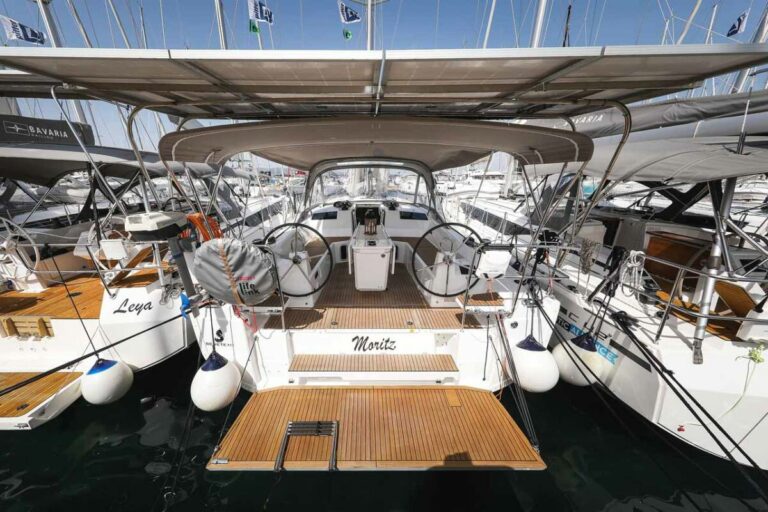
Solutions
Propulsion systems for commercial vessels
We are experts in electric & hybrid propulsion solutions for commercial use
Significant cost savings
Oceanvolt’s electric and hybrid propulsion systems reduce fuel and maintenance costs, offering a rapid return on investment. Charter operators can save up to 57% in operating expenses, while ferries see a break-even point in just over a year.
Minimal downtime, maximum efficiency
With fewer maintenance needs and a Remote Service Interface for online troubleshooting, Oceanvolt systems keep vessels running smoothly, minimizing downtime for commercial operators.
Silent, safe, and eco-friendly
Operating at 48 volts for passenger safety, Oceanvolt’s systems provide a quiet, exhaust-free experience while reducing environmental impact, making them the sustainable choice for modern marine transportation.


Propulsion systems for commercial vessels
Operating electric propulsion systems in commercial vessels, ferries, or charter vessels is significantly more cost-efficient than using traditional fossil fuel-powered combustion engines. This is primarily due to near-zero maintenance costs, lower energy consumption, and enhanced reliability.
As the world leader in hybrid and electric propulsion solutions for both monohull and multihull yachts, Oceanvolt is uniquely positioned to assist professional marine transportation operators in transitioning to sustainable technology. With hundreds of successful installations in private and commercial vessels, Oceanvolt delivers proven performance and efficiency.
Main Features
All Oceanvolt systems operate at 48 volts, ensuring passenger safety and ease of maintenance.

Advantages for Charter Operators
For charter businesses, downtime means lost revenue. Oceanvolt’s hybrid and electric systems reduce maintenance needs, ensuring fewer interruptions. Our Remote Service Interface allows online troubleshooting and quick problem resolution, keeping vessels operational.
We recommend charter configurations that include a DC generator for battery recharging through hydro generation or, when needed, via generator power. This setup efficiently supports propulsion as well as onboard amenities like air conditioning and refrigeration. Charter guests will experience silent, exhaust-free sailing while operators can save up to 57% on energy and maintenance costs.

Benefits for Ferries & Workboats
Switching from diesel to hybrid or fully electric propulsion offers compelling financial advantages. The cost savings from reduced fuel consumption, lower maintenance expenses, and increased operational uptime result in a rapid return on investment. A break-even point can be reached in just over one year for hybrid systems. In fully electric solutions, such as small ferries operating in urban environments, the payback period is even shorter.

Advantages for Charter Operators
For charter businesses, downtime means lost revenue. Oceanvolt’s hybrid and electric systems reduce maintenance needs, ensuring fewer interruptions. Our Remote Service Interface allows online troubleshooting and quick problem resolution, keeping vessels operational.
We recommend charter configurations that include a DC generator for battery recharging through hydro generation or, when needed, via generator power. This setup efficiently supports propulsion as well as onboard amenities like air conditioning and refrigeration. Charter guests will experience silent, exhaust-free sailing while operators can save up to 57% on energy and maintenance costs.


Reference
Bruges Tourist Boats


Ready to commit? Build your own system with our configurator
Ready to tailor the perfect solution for your boat? Our system configurator lets you customize your electric propulsion system based on your vessel's specs and power needs. Click below to get started and find the best configuration for your boat.
Rather talk first with a professional? We’re here for you
If you’d prefer to speak with an expert before making your decision, we’re happy to help! Our team is ready to answer any questions and guide you through the best options for your boat.




